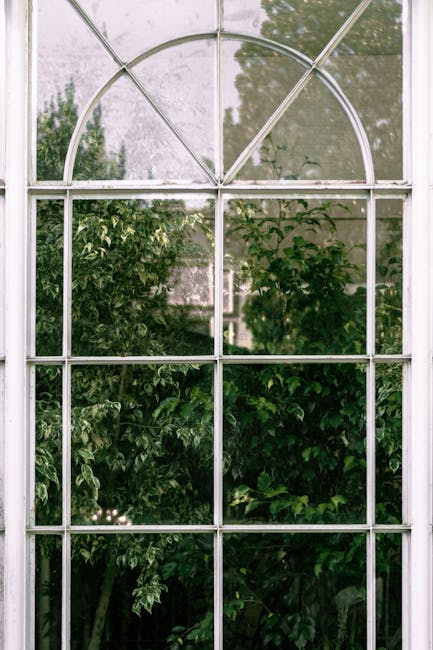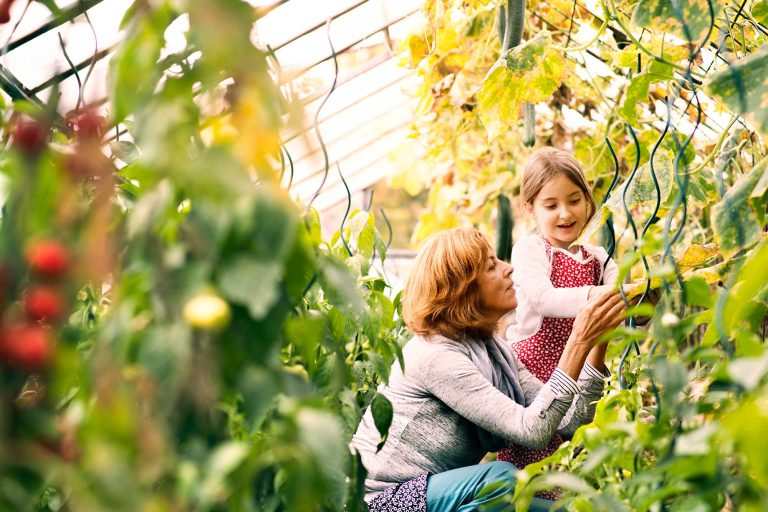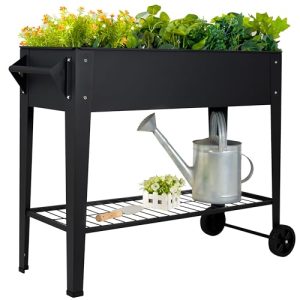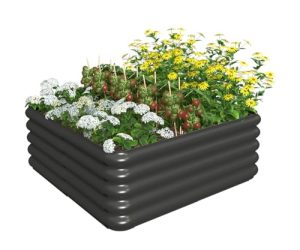Imagine stepping into your backyard and being greeted by a lush, vibrant wall of greenery. This can be your reality with a vertical garden, a unique and space-saving way to transform any area into a living oasis.
Whether you have a tiny balcony or a spacious backyard, vertical gardens offer a creative solution to maximize your gardening space while adding beauty to your surroundings. You might be wondering how you can create your own vertical garden design.
It’s simpler than you think! With a few materials and a dash of creativity, you can turn ordinary walls into extraordinary landscapes. In this guide, we’ll walk you through the essential steps to build a stunning vertical garden that not only enhances your outdoor space but also brings a sense of tranquility and freshness into your life. Curious to learn more? Keep reading to discover how easy it is to elevate your gardening experience and make the most of your space. Let’s get started on crafting your very own vertical garden masterpiece!
Benefits Of Vertical Gardens
Creating vertical gardens can save space while enhancing home aesthetics. They improve air quality and reduce urban heat. Vertical gardens also offer a sustainable solution for growing herbs and vegetables, making them a practical choice for urban dwellers.
Vertical gardens are not just a trendy design choice. They offer multiple benefits that make them a smart addition to any space. From maximizing limited areas to enhancing air quality, vertical gardens provide more than just visual appeal. Let’s explore some of the key benefits of incorporating vertical gardens into your environment.Space Efficiency
Vertical gardens maximize space by growing upwards. Perfect for apartments or small homes. They allow you to grow more plants without needing extra ground space. This makes them ideal for urban areas where every inch counts.Aesthetic Appeal
Vertical gardens transform plain walls into vibrant green spaces. They add beauty and texture to any environment. You can choose a variety of plants to suit your style. Whether it’s a lush, tropical look or a minimalist design, vertical gardens enhance visual interest.Improved Air Quality
Plants in vertical gardens help purify the air. They absorb pollutants and release oxygen. This leads to fresher, cleaner air indoors. Vertical gardens can also reduce noise levels, creating a peaceful atmosphere.Urban Agriculture
Growing food in vertical gardens is possible. They enable urban agriculture by offering a space-efficient solution. You can grow vegetables and herbs even in small areas. This reduces the need for transport and supports sustainable living.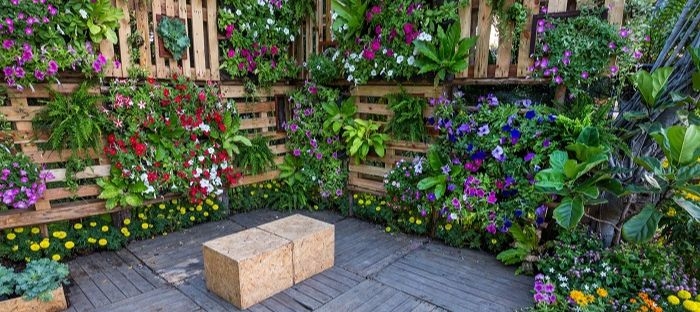
Credit: davesgarden.com
Choosing The Right Location
Choosing the right location for your vertical garden is crucial. The location affects plant growth, health, and maintenance. It ensures your garden flourishes beautifully.
Assessing Sunlight Exposure
Sunlight is vital for plant health. Observe how much sun the spot receives daily. Some plants need full sun, while others thrive in shade. Choose a location that matches your plant’s sunlight needs.
Evaluating Structural Support
Vertical gardens require sturdy support. Check walls or fences for strength. Ensure they can hold the garden’s weight. Weak structures may collapse, damaging your plants. Opt for locations with solid support.
Accessibility For Maintenance
Easy access is essential for garden upkeep. Choose a spot where you can reach plants easily. Regular maintenance keeps your garden healthy. Make sure the location allows for convenient watering and pruning.
Selecting Suitable Plants
Selecting the right plants is key to a thriving vertical garden. Opt for hardy, low-maintenance varieties that suit your climate and space. Consider foliage diversity for visual appeal and balance.
Selecting suitable plants for your vertical garden is a crucial step. The right plants ensure a thriving, beautiful garden that suits your space. Consider key factors like climate, growth habits, and aesthetics to guide your choices. This section helps you navigate these aspects for optimal results.Climate Considerations
Understanding your local climate is essential for plant selection. Tropical plants flourish in warm regions. Succulents thrive in dry areas. Cold climates require hardy plants that withstand frost. Choose plants compatible with your region’s weather conditions. This ensures healthy growth and reduced maintenance.Varieties For Vertical Growth
Some plants naturally adapt to vertical spaces. Vines are perfect for climbing structures. Compact plants fit well in small pockets. Herbs like thyme and oregano grow densely, utilizing vertical space efficiently. Consider varieties known for their vertical growth habits. This maximizes space and enhances garden design.Balancing Aesthetics And Functionality
A vertical garden should be pleasing to the eye and functional. Choose plants with varying textures and colors for visual interest. Functional plants like herbs offer culinary benefits. Combining aesthetics with practicality enriches your garden experience. This balance creates a garden that’s both beautiful and useful.Designing The Framework
Creating a vertical garden begins with a sturdy framework. Ensure it supports weight and allows drainage. Use lightweight materials and secure them properly for lasting durability.
Designing the framework of a vertical garden is crucial. It determines the garden’s stability and aesthetic appeal. A well-planned framework ensures longevity and ease of maintenance. Start by envisioning the space available and the plants you wish to grow. Consider the weight of the plants and soil, and how they will be supported. A solid framework makes your garden thrive.Materials And Tools
Choose materials that are durable and weather-resistant. Common choices include wood, metal, or plastic. Each material has its own benefits. Wood offers a natural look, while metal provides strength. Plastic is lightweight and easy to clean. Gather essential tools like drills, screws, and measuring tapes. These tools help in precise construction. Ensure you have safety gear like gloves and goggles.Building Structures
Begin by constructing a sturdy base. This supports the entire garden. Use strong brackets or shelves to hold pots or planters. Vertical slats or grids can support climbing plants. Ensure structures are securely attached to walls or frames. Stability is key for safety and plant health. Consider the weight distribution to prevent tipping. Test the structure’s strength before planting.Incorporating Irrigation Systems
Plan an efficient irrigation system to keep plants healthy. Drip irrigation is ideal for vertical gardens. It delivers water directly to roots, reducing waste. Install pipes or hoses along the framework. Use timers for automatic watering. This ensures consistent moisture levels. Consider drainage options to avoid waterlogging. Proper irrigation keeps your garden vibrant and thriving.Implementing The Design
Implementing the design for a vertical garden involves selecting the right plants and arranging them aesthetically. Ensure proper irrigation and sunlight to maintain plant health. Consider using lightweight materials for easy installation and maintenance.
Implementing the design of a vertical garden transforms your space. It requires careful planning and execution. Whether you’re a seasoned gardener or a beginner, following these steps ensures success.Preparing The Site
Choose a location with adequate sunlight. This is crucial for plant growth. Ensure the wall or structure is strong enough to support the garden’s weight. Clear any debris or obstacles from the area. This helps in easy installation and maintenance. Measure the area to plan the garden layout effectively.Installing The Framework
Select a sturdy framework for your garden. It could be made of wood, metal, or plastic. Attach the framework securely to the wall or support. Use brackets or screws for stability. Ensure the framework is level and well-aligned. This prevents plants from tilting or falling.Planting Techniques
Choose plants suited for vertical growth. Herbs, succulents, and small flowers work well. Use high-quality soil for better plant health. Arrange plants with similar light and water needs together. This simplifies care and watering routines. Plant densely to create a lush appearance. Ensure proper drainage to prevent root rot.
Credit: m.youtube.com
Maintenance Tips
Maintaining a vertical garden design requires attention to detail. Proper care ensures healthy plant growth and longevity. This guide provides essential maintenance tips for your lush vertical oasis.
Watering And Fertilization
Vertical gardens need consistent watering. Check soil moisture regularly. Water gently to prevent soil erosion. Use drip irrigation for even distribution. Fertilize every few weeks. Choose organic fertilizers for healthier plants. Slow-release granules can provide nutrients over time.
Pruning And Training
Prune plants regularly to maintain shape. Remove dead leaves and branches. This encourages new growth. Train climbing plants with supports. Use trellises or wires. Guide them to grow upwards. This keeps your garden tidy and promotes proper growth.
Pest And Disease Management
Inspect plants for pests. Look under leaves and stems. Use insecticidal soap for minor infestations. For severe cases, consult a professional. Disease prevention starts with healthy soil. Ensure good air circulation. Remove infected plants immediately. This stops disease spread.
Creative Design Ideas
Creating a vertical garden offers a unique way to bring nature indoors or enhance outdoor spaces. Thinking creatively can transform simple plants into stunning displays. Explore design ideas that blend style with function.
Using Recycled Materials
Repurpose old items for a sustainable garden. Use wooden pallets as plant holders. Turn glass bottles into hanging planters. These materials add character and reduce waste.
Incorporating Art And Lighting
Add a touch of art to your vertical garden. Install colorful murals behind the plants. Use decorative pots to enhance visual appeal. Integrate soft lighting for a warm glow at night.
Seasonal Plant Rotations
Rotate plants to keep your garden fresh. Choose hardy plants for winter. Select vibrant flowers for spring. This keeps your garden lively all year round.
Case Studies Of Successful Projects
Exploring the world of vertical garden design reveals creative and practical ways to beautify spaces. These case studies showcase successful projects that blend aesthetics with functionality. They offer inspiration and guidance for designing your own lush, green walls.
Building a vertical garden can transform any space into a green oasis. Let’s explore some successful projects that showcase the potential of vertical gardens. These case studies highlight innovations and practical applications in various settings.Urban Settings
Vertical gardens thrive in bustling city environments. In New York, a hotel created a lush facade. The garden reduced noise and improved air quality. This project inspired other buildings to adopt green walls. Another example is Singapore’s Changi Airport. It features a stunning vertical garden in its terminals. The greenery provides a calming effect for travelers. These urban projects demonstrate how vertical gardens can beautify and improve city life.Residential Applications
Vertical gardens are perfect for homes with limited space. In Sydney, an apartment owner installed a vertical garden on a small balcony. This project allowed the owner to grow herbs and flowers year-round. In Mumbai, a family transformed their living room wall into a green sanctuary. The garden improved the air quality and aesthetics of their home. These residential examples show how vertical gardens can enhance living spaces.Commercial Examples
Businesses are also embracing vertical gardens. A restaurant in Paris uses a green wall as a backdrop for diners. The garden creates a refreshing ambiance and attracts customers. In Tokyo, an office building has a vertical garden in its lobby. This project boosts employee morale and provides a welcoming atmosphere for visitors. These commercial projects illustrate how vertical gardens can enhance business environments and customer experiences.
Credit: www.trustbasket.com
Frequently Asked Questions
What Is A Vertical Garden Design?
A vertical garden design involves growing plants upward rather than horizontally. It’s perfect for small spaces. This design uses structures like walls or trellises to support plants. It enhances aesthetics and improves air quality. Vertical gardens can be indoor or outdoor, offering flexibility and creativity in landscaping.
How Do Vertical Gardens Save Space?
Vertical gardens utilize vertical space, freeing up ground area. They are ideal for balconies and small yards. By growing plants vertically, you maximize the use of limited space. This method allows for more plants in a smaller area, making it a practical solution for urban gardening.
What Plants Are Best For Vertical Gardens?
Succulents, ferns, and herbs are great for vertical gardens. These plants require less maintenance and space. Choose plants that suit your climate and sunlight conditions. Ensure they have similar water and nutrient needs. This makes maintenance easier and keeps your vertical garden thriving.
How To Maintain A Vertical Garden?
Regularly water and check for pests in your vertical garden. Use a drip irrigation system for consistent moisture. Fertilize as needed and prune plants to encourage growth. Ensure adequate sunlight for all plants. Maintenance keeps your garden healthy and visually appealing, enhancing its longevity.
Conclusion
Creating a vertical garden adds beauty and value to your space. It’s a fun project that suits any size or budget. You just need creativity and a few basic supplies. Start small and watch your garden grow over time. Choose plants that match your climate and preferences.
Enjoy the benefits of cleaner air and a touch of nature indoors. With patience, your vertical garden will thrive. It’s a rewarding experience for any plant lover. Let your garden bring joy to your home. Happy gardening!
